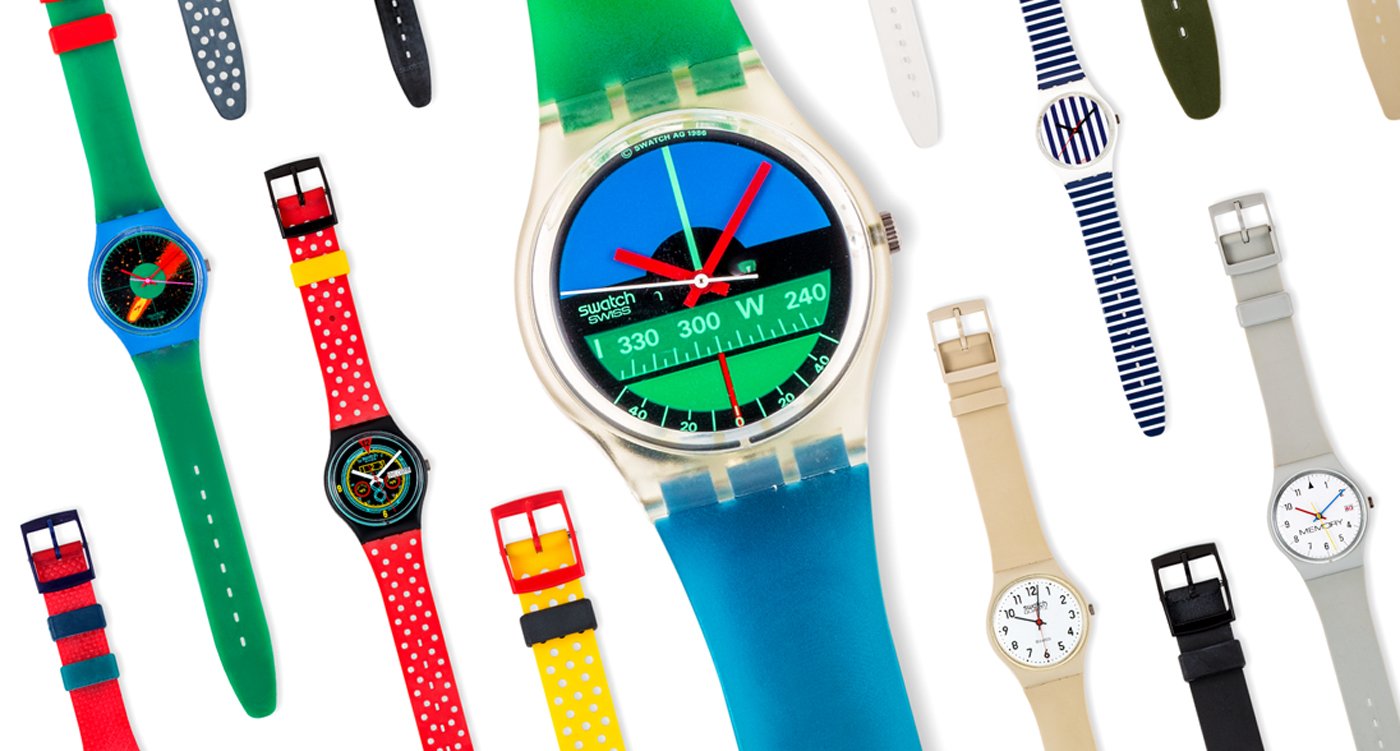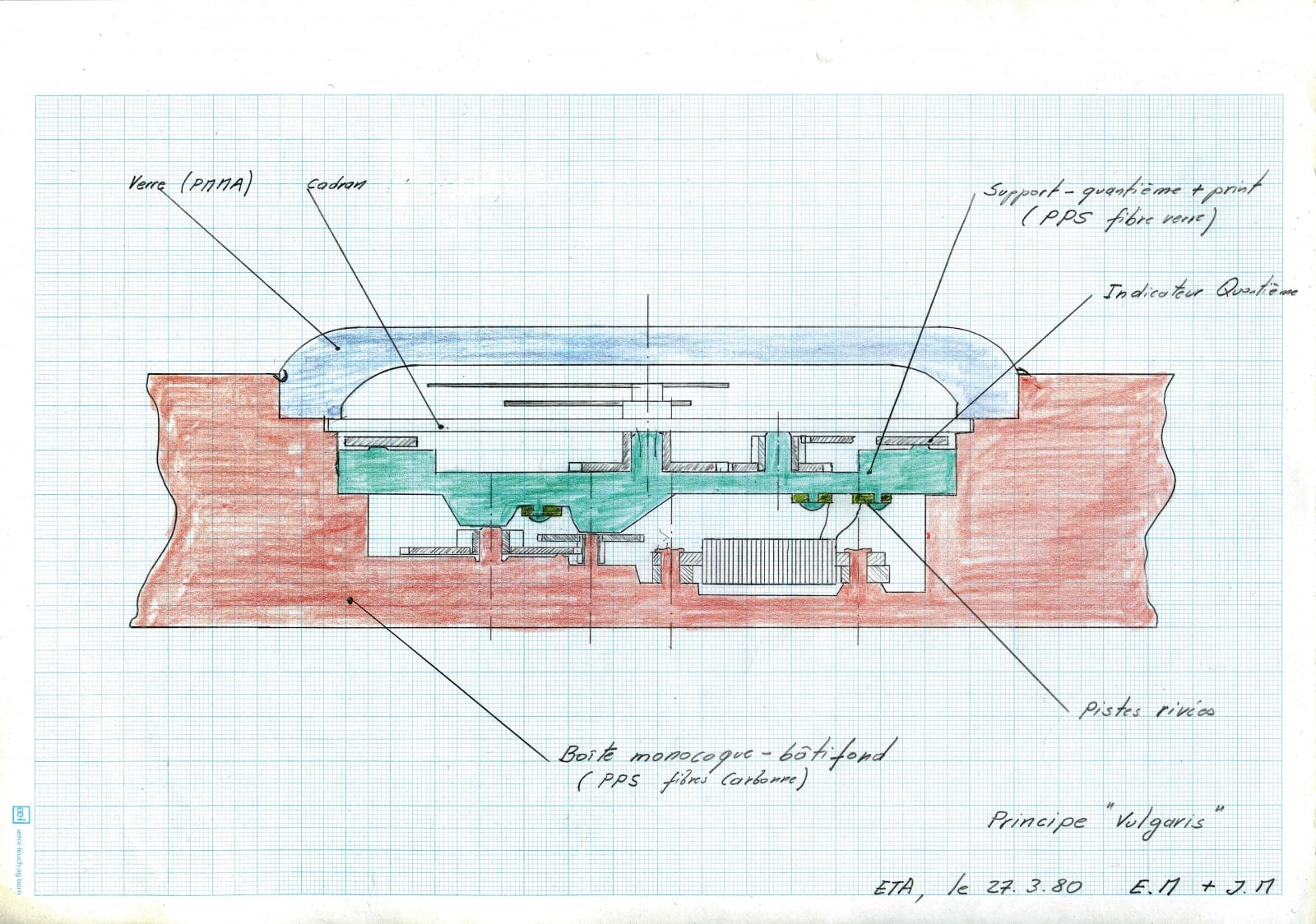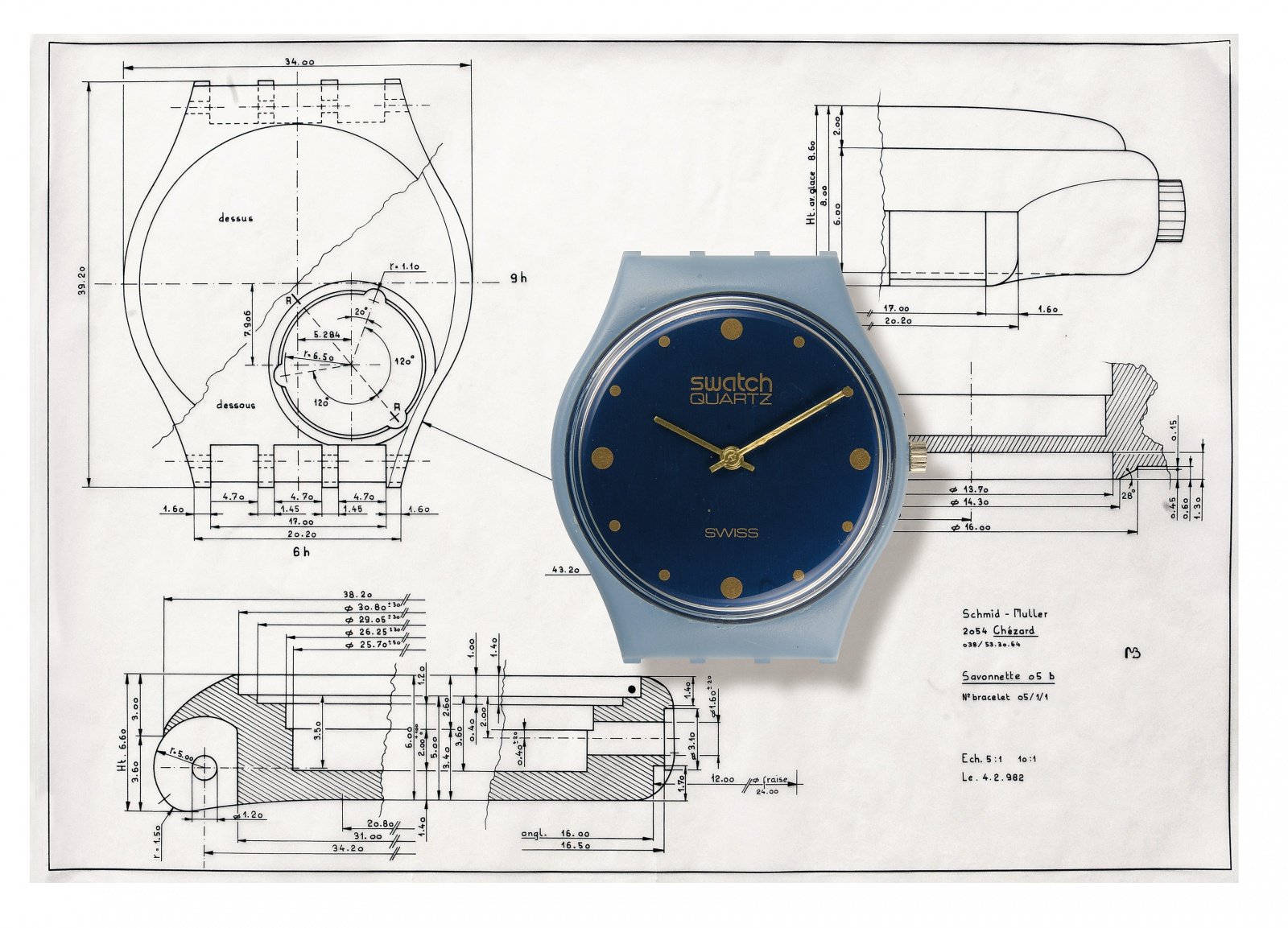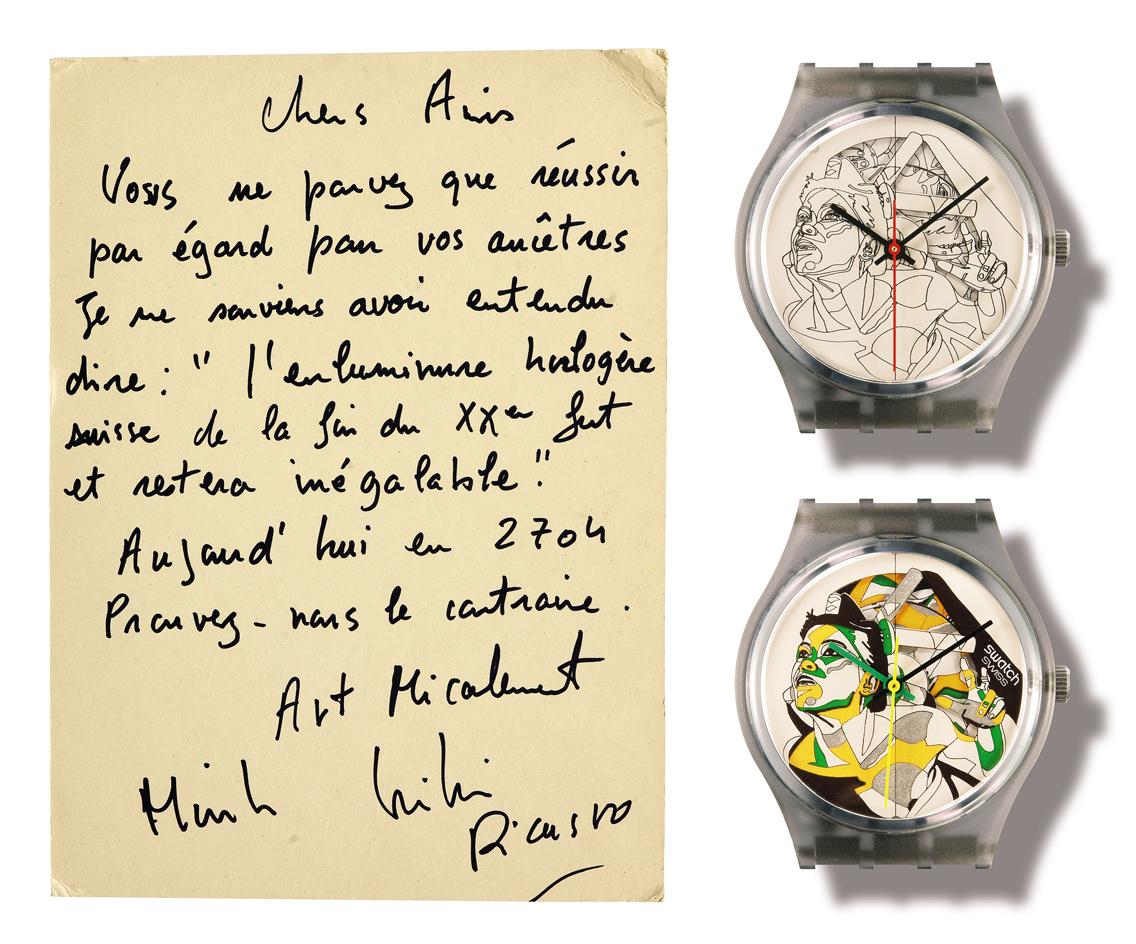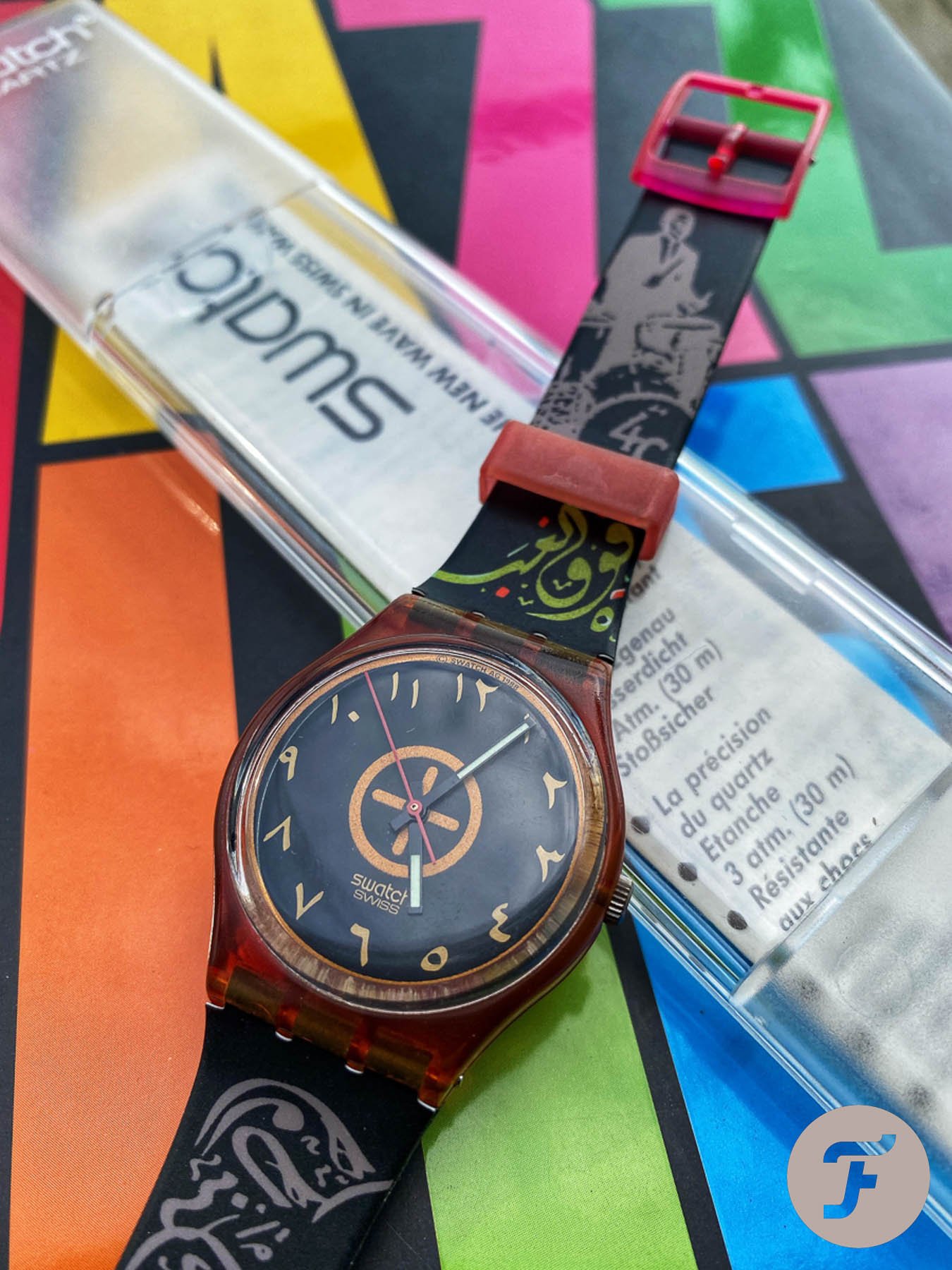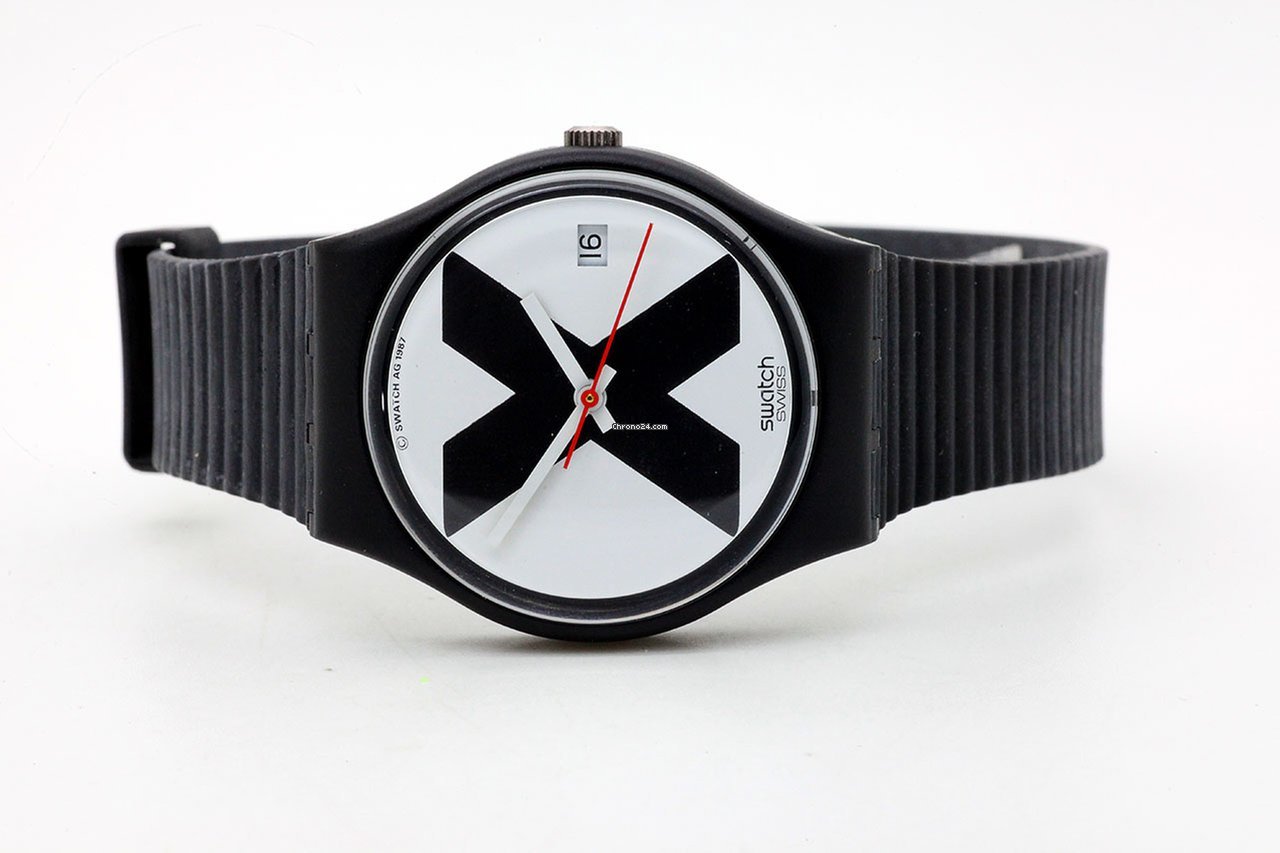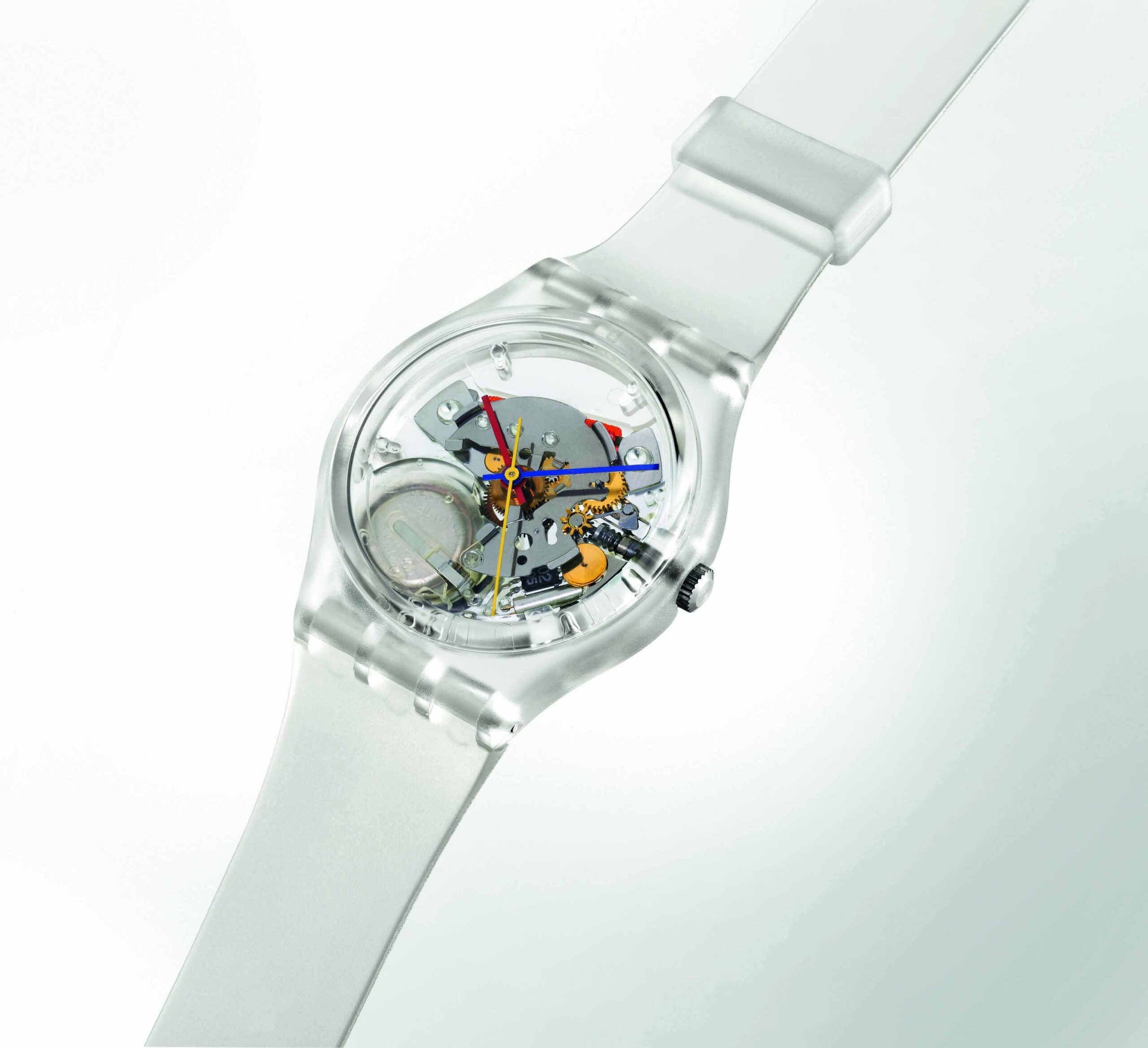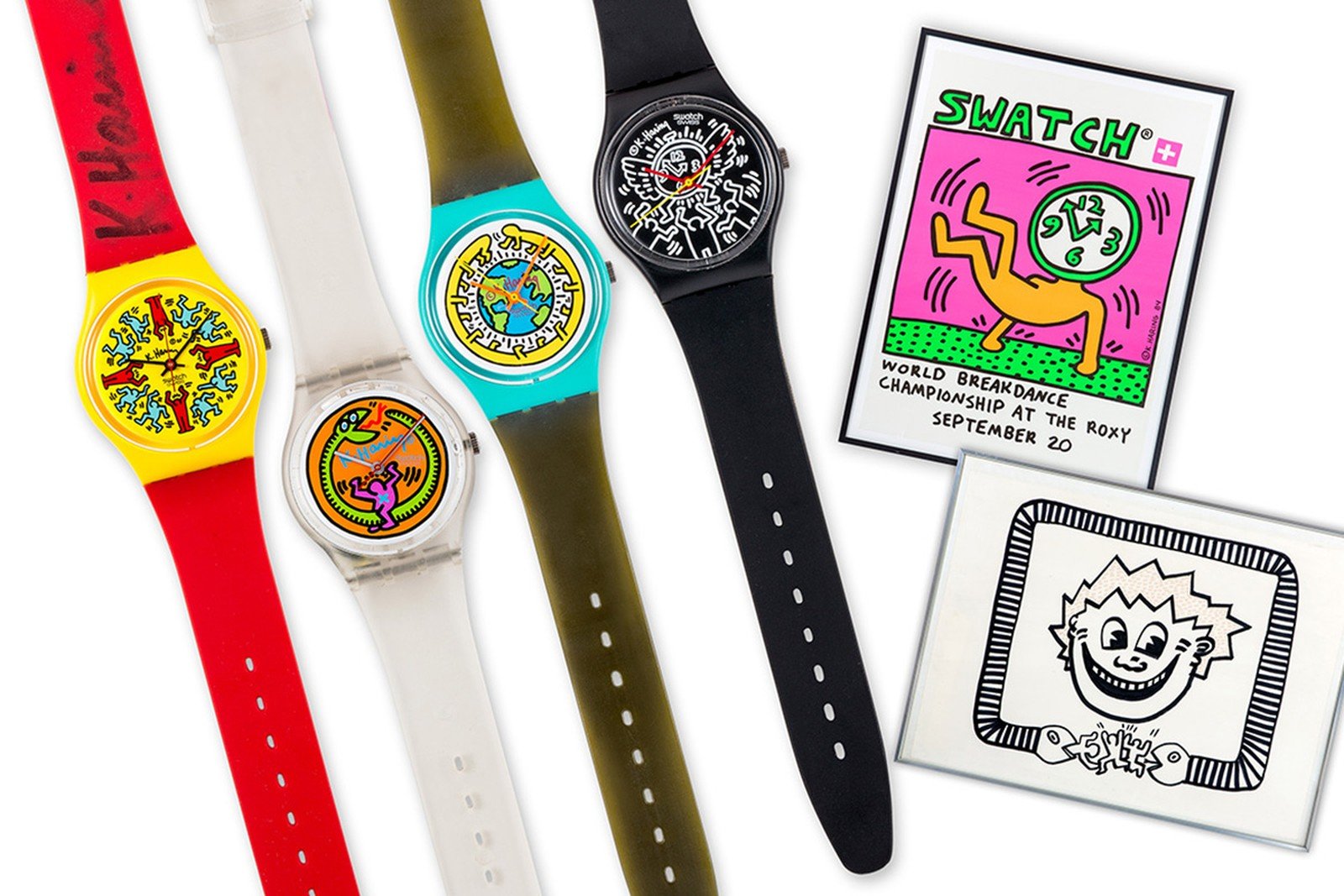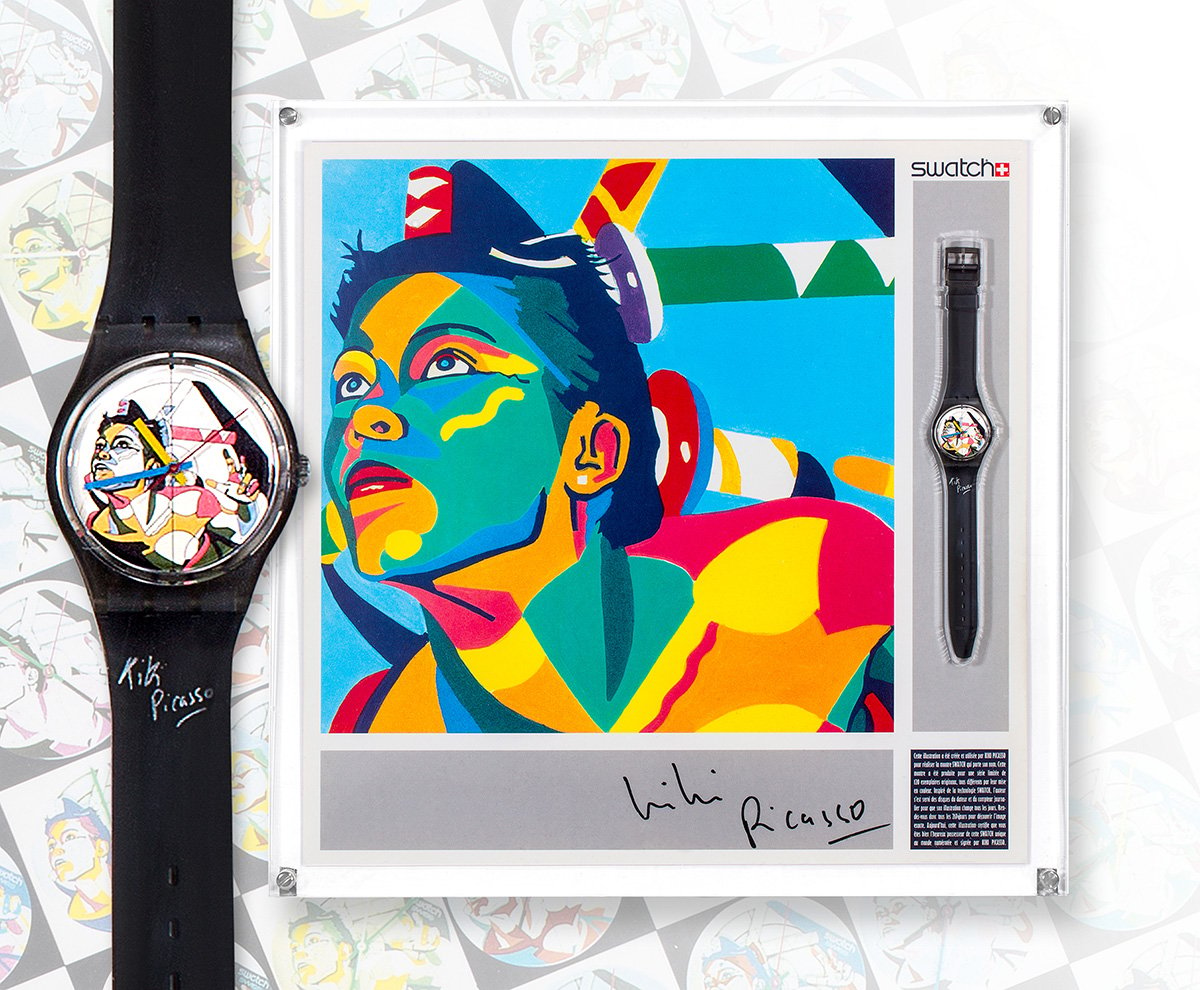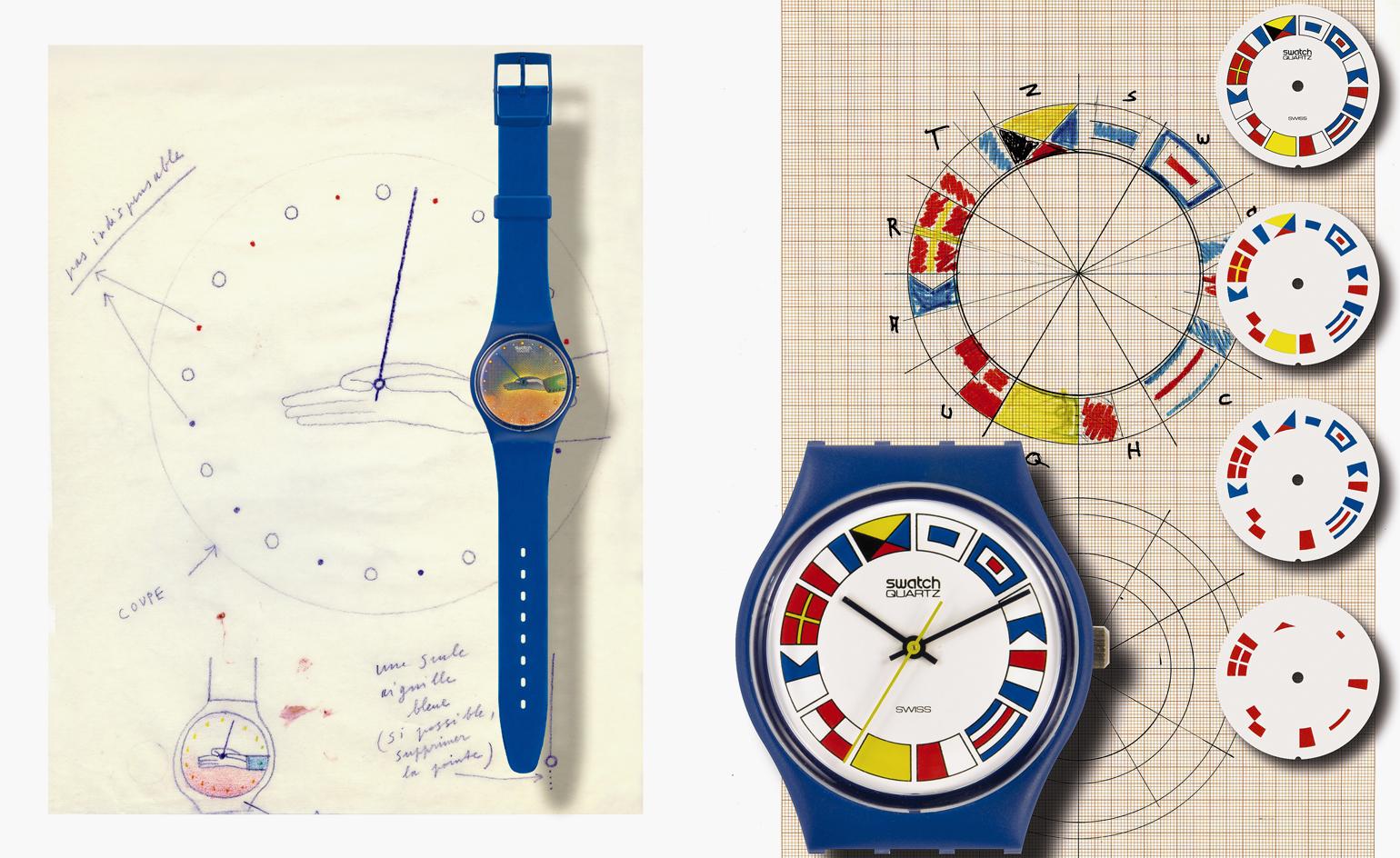Buying Guide: The Best Swatch Watches From The 1980s
We like to talk about vintage watches a lot within the Fratello team. While the daily routine is largely focused on the most recent developments in the world of watches, the most fun for many of us lies in the sometimes weird and often wonderful world of vintage watches. It’s a world full of history, remarkable watches, incredible stories, and quirky details. It inspired us to come up with a series of articles focusing on the best watches per decade from a select group of brands. Some of them are priceless, some of them still affordable. In this installment, we will take a look at the best Swatch watches from the 1980s.
While the 1970s were a decade filled with tremendous change in the watch industry, the 1980s showed the fruits of that change. When Seiko started the quartz revolution, most Swiss brands never predicted the enormous long-term effects on the industry. This is why a lot of Swiss brands ended up in trouble, often with disastrous results. In the 1980s, quartz was king, which is reflected with this week’s brand. Swatch is a brand that has its roots in the eighties and is a perfect example of the impact of the quartz revolution.
When it comes to style and design, the eighties were a special time. Often perceived as a decade with a distinct lack of style or rather an abundance of tacky design, the ’80s were often frowned upon. But Swatch took watch design to a completely different level in the 1980s. The brand created watches that were provocative, loud, colorful. As someone that grew up in the eighties, I loved seeing this new brand creating waves. Little did I know how important Swatch became for the Swiss watch industry as a teenage onlooker.
Swatch in the 1980s
Most of you will know the story, but it is good to remind ourselves of the important first steps leading up to the creation of brands like Swatch. In the late 1970s, the Swiss watch industry was in deep crisis due to the quartz revolution. The traditional approach to mechanical watchmaking was no competition for the cheap, mass-produced quartz watches from Asia that flooded the market. It even changed the way the world looked at watches. It went from being a product that would serve you a lifetime to become a cheap and disposable product.
To save the industry, the Swiss brands had to come up with something new and radical. The new watches needed to be simpler and made from new and innovative materials that most traditional Swiss brands had not used up until then. These new materials would also lead to a new and cheaper way for the Swiss to produce watches. The company that put together a small team of engineers to work on the solution was the movement manufacturer ETA SA. Two engineers who worked at the company, Elmar Mock and Jacques Müller, worked on finding solutions under Dr. Ernst Thomke, who was the ETA CEO at the time.
A single-piece plastic watch
The breakthrough solution they came up with was a watch that featured a single-piece case made of plastic. The bottom of the case also served as the base plate for the quartz movement inside. Mock and Müller also managed to bring back the number of parts to 51, where most movements used at least 91 parts at the time. This quest is also known as “Revolution 51”. Essentially the two men had designed a watch that was durable and ready for mass production. But there was one challenge they had to overcome. The issue with mass-produced plastic watches like the one they had developed is that they would all look the same. So they needed a way to make sure that these watches stood out.
Designers Marlyse Schmid and Bernard Müller were brought on board as the creative team. They designed the final 34mm case with its characteristic shape and two bridges that strengthen the connection to the strap. Additionally, they also designed almost all the dials from the prototypes in 1981 up to most of the regular production Swatch watches introduced until 1986. Schmid and Müller were also the teams behind the development of the iconic Swatch logo. The result was a watch was easily recognizable by its overall case and strap design, outspoken Swiss in its name and logo, and offered a great deal of variety in terms of appearance.
Why Swatch?
ETA CEO Thomke and Nicholas Hayek, who was at the helm of SMH that owned brands like Omega, Tissot, and ETA, believed that the small team’s watches were perfect as a second watch, hence the name Swatch. The overall idea was simple. People that love fashion and follow trends often have multiple pairs of shoes, jackets, trousers, and shirts that are part of a rotation. Hayek believed that these new watches should also be part of that rotation, and people could mix things up. With a price between €30 and €40, customers would easily buy more than one Swatch. Finally, in 1983 the new Swatch brand was introduced to the public.
From the moment Swatch hit the market, it became an instant success. The brand had a marketing plan that was completely different from what traditional marketing for watch brands looked like. Responsible for that was marketing consultant Max Imgruth who quickly became president of Swatch Watch U.S.A. He positioned the brand based on the idea of the watches being fashion accessories targeted at girls and young women. The brand started producing seasonal collections like fashion brands, and Swatches were also sold at department stores instead of just watch and jewelry stores. On top of that, the advertising was loud, bold, and in your face. Everything about the brand was different compared to anything the watch industry had seen. It turned out to be a huge success and, in the end, saved the Swiss watch industry.
A Top-5 of best Swatch models
Choosing the five best Swatch watches from the 1980s is almost impossible. At that time, the brand created a collection of 24–25 regular models that would stay in the collection for 1–2 years. They would also release seasonal collections with 24 different models that changed every 2–3 months. Finally, there have been numerous Swatch Specials made for special occasions or created with numerous famous artists. It sparked another new phenomenon amongst fans we are all very familiar with now: watch collecting.
With all the limited-edition releases from famous artists came a crowd of serious collectors. Over the years, some collectors have curated collections that hold thousands of pieces worth millions when they go up for auction. It has made these simple watches desired collectibles that could be considered art rather than a classical watch that you collect. Let’s look at five of the most remarkable models and collaborations that came out during the 1980s. It is a great reminder of how ingenious and impactful the brand was during that decade. It makes this buying guide rather a retrospective of said impact rather than a typical buying guide.
Entry-level — Your own Swatch from the 1980s
If you have ever owned a Swatch back in the 1980s and don’t have it anymore, go search for it online! You will be amazed about how many of the vintage models are still available for sale nowadays. I did the same thing, and it led me to buy the Swatch that I owned in 1989. I told the story behind the watch not too long ago in an article about the memories of the first watches that the Fratello editors owned. A couple of years back, I was asked to write about my first watch, and while it was not my actual first watch, the Swatch Bar Oriental ref. GB104 was the first watch I vividly remember picking out and wearing.
The only problem was that I didn’t know what it was called. To trace it, I had to find out a name or a reference number. The solution was going through a legendary book known as the Swatch-Clopedia. I knew I got the watch as a birthday gift in the late eighties. On top of that, I knew the watch had a red transparent case and a black dial and strap. It took me about a full day to find it. I did a quick search on eBay, and to my surprise, a German seller had “my” Swatch for a very reasonable price. A few days later, the watch landed on my desk, in NOS condition in its original packaging. It has been worth every penny because the memories that come with it are priceless. So my tip is to do the same if you can.
My choice — Swatch X-Rated ref. GB406
The Swatch that is my choice for this list is a true cult classic that also brings back many memories for me. I grew up in the Dutch hardcore punk scene in the nineties. Whenever I would go to hardcore shows in the early 90s, I would see the Swatch X-Rated ref. GB406 on the wrists of straight-edge kids. Immediately after the Swatch X-Rated was released in 1987, it became the iconic symbol of that movement. Straight edge was founded as a movement within the hardcore scene that believes in refraining from drinking alcohol, doing drugs, or smoking. This idea of positive living was a reaction to the destructive nature of the punk scene in the early 1980s.
The “X” became a symbol of that straight edge scene when legendary singer/guitarist Ian MacKaye — who wrote the song “Straight Edge” — wanted to see a show with some of his friends by one of their favorite bands. But as they weren’t 21 yet, they weren’t allowed in the venue. MacKaye proposed to the bar owner to put large black X’s on their hands as they weren’t looking to drink anyway. That way, the bar personnel could easily see that they were under the legal drinking age. However, the Swatch X-Rated was a way more elegant way of making the same statement. The watch was heavily sought-after for years, fetching prices up to €1K–€1.5K. In 2018 Swatch decided to re-issue the watch, and prices have come down a bit. But the original will still cost between €500–€1,000.
Money is no object #1 — Swatch ref. GK100 SP “The Original Jelly Fish”
This was the first Swatch Special. This completely clear transparent version of the Swatch was presented in March of 1983. It was produced in a small production run of just 200 pieces to present the brand to the world. It was a huge success because the watch perfectly showed off the magic of the Swatch. On top of that, the watch looked incredibly cool at the time. The story goes that Swatch produced another 300 extra pieces that were gifted to VIPs. Because it was the first of the Specials, this watch has legendary status within the Swatch community.
Swatch produced that clear transparent model for several years. Because of its status, Swatch released the Big Bold Jellyfish in 2019. It is a tribute to the original watch from the 1980s that measures a whopping 47mm and looks completely different. The original is still the best way to go. Or try and hunt down the Jelly Fish Chronometer edition ref. GK124 from 1990. As you will understand, a lot of the transparent clear Swatch models are subject to heavy discoloration. Depending on the condition and whether it is one of the early models, the price will differ. If you want one of the original 500 pieces from 1983, prices will go up to a whopping €3,000. Later models go for a lot less but will still cost a couple of hundred Euros.
Money is no object #2 — Swatch Keith Haring
The series of watches that artist Keith Haring designed for Swatch has become legendary amongst both Swatch and Keith Haring fans. According to the story, the President of Swatch USA, Max Imgruth, contacted Andy Warhol to create an art watch for Swatch. As Warhol had no time, he proposed that his protege Keith Haring would be the man for the job. Haring loved the idea and sent two designs to Swatch. As they were already part of his existing art collection, Swatch decided not to use them. They wanted something unique and exclusive for the brand.
Haring, therefore, designed four more watches that have become legendary art pieces. This series was unveiled in 1986 when Haring opened the Pop Shop in SoHo, New York. The idea behind the Pop Shop was to bring his art to the people. Haring hated the idea that art was only available in galleries and museums. He wanted all walks of life to be able to enjoy his art. The series of four Swatch watches was the perfect manifestation of that idea. They were amongst the first items that went for sale in the Pop Shop. Today, it’s tough to find these watches as a complete set. They are often part of larger Swatch collections and don’t come up for sale often. Giving an estimated price is therefore very hard. As with all art, the price is what someone is willing to pay for it.
Money is no object #3 — Swatch Kiki Picasso ref. GZ008
Andy Warhol was not the first artist that was asked to create an art special by Swatch. In 1984 Swatch asked French artist Christian Chapiron also known as Kiki Picasso, to create the first-ever collaboration art Swatch. But Chapiron did not just create one design for one single watch. He created 140 different watches, all based on the same design but executed differently. A total of 120 watches were given away, along with the famous poster, to important people in the art world.
Next to the 140 unique watches officially produced, Chapiron also produced a huge number of prototypes for the project. The story goes that there are at least 200 prototypes of the watch. Because every watch was unique, the incredible amount of prototypes, and the fact that it was the first artist collaboration, the Kiki Picasso Swatch has become legendary. Serious Swatch collectors have been trying to collect as many of the 140 different pieces as possible. Famous Swatch collector Rainer Haas owns 33 of these Mimi Picasso pieces that all look very different. Prices for a Swatch Kiki Picasso go from €12.5K–€25K, making it the most sought after and one of the most expensive models out there.
Final Thoughts
When it comes to this series of articles, I cannot stress enough to do your research. On top of being crucial in avoiding disappointment when buying a vintage watch, it can also be a lot of fun. Especially when it comes to Swatch, the fun of collecting is in the stories, the memories, and the appreciation of the brand and its impact on the world of watches. If you want to learn more about the brand, I can recommend Swatch & Beyond, Masters In Time (formerly known as Squiggly). Also, try and get your hand on a copy of any of the Swatch-Clopedias that were released up until 2008.
This series only highlights a small selection of the most iconic models from the 1980s. Tons more models deserve attention, but there is no time and space to get into all of them. As I mentioned, there is a whole library’s worth of information on all the different models. If you are in the market for vintage Swatch watches, there is a whole universe of information out there for you. Ever since I bought back my Swatch Bar Oriental, I have added more of these cult classics to my collection. Four decades after they were first released, they haven’t lost any of their impact.
Next up, we will take a look at some of the best Zenith watches from the 1980s. So keep an eye out for that article dropping next week. In the meantime, let us know what your favorite Swatch from the 80s is in the comments section!

